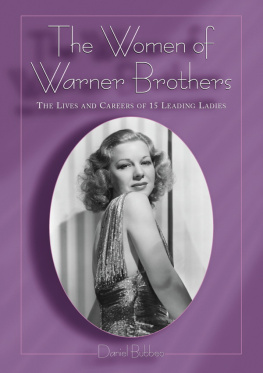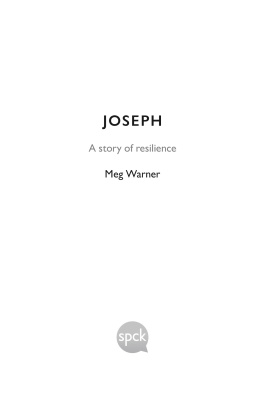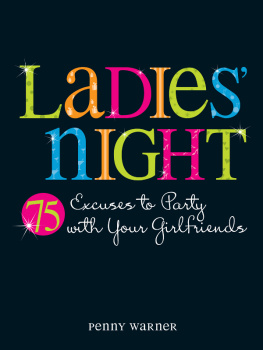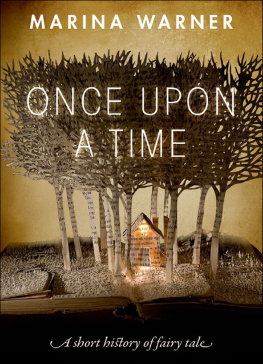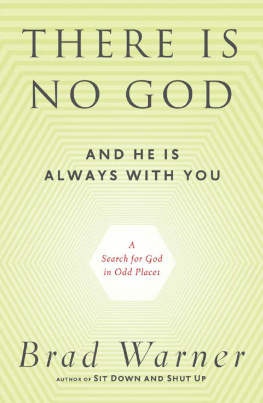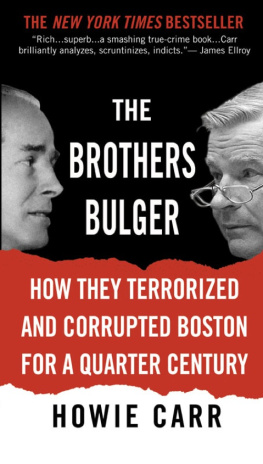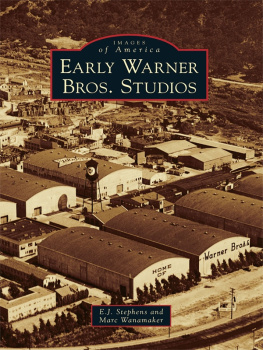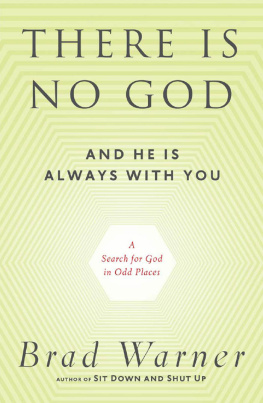
Table of Contents
Library of Congress Cataloguing-in-Publication Data
Bubbeo, Daniel, 1958
The women of Warner Brothers : the lives and careers
of 15 leading ladies, with filmographies for each / by Daniel Bubbeo
p. cm.
Includes bibliographical references and index.
Contents: Joan BlondellNancy ColemanBette DavisOlivia de HavillandGlenda FarrellKay FrancisRuby KeelerAndrea KingPriscilla LaneJoan LeslieIda LupinoEleanor ParkerAnn SheridanAlexis SmithJane Wyman.
ISBN 0-7864-1137-6
1. Motion picture actors and actressesUnited StatesBiography.
2. ActressesUnited StatesBiography.
3. Warner Bros. I. Title
PN1998.2.B82 2002
791.43'028'0820973dc21 [B] 2002044513
British Library cataloguing data are available
2002 Daniel Bubbeo. All rights reserved
No part of this book may be reproduced or transmitted in any form or by any means, electronic or mechanical, including photocopying or recording, or by any information storage and retrieval system, without permission in writing from the publisher.
On the cover: Glenda Farrell in a publicity photo from Stolen Heaven (Paramount 1938)
McFarland & Company, Inc., Publishers
Box 611, Jefferson, North Carolina 28640
www.mcfarlandpub.com
To my wife, Kathy, the leading lady in my life
Acknowledgments
I will forever be indebted to the many people who helped in the preparation of this book. First and foremost, I must thank my dear wife, Kathy, and my son, Philip, for their support and patience with me, especially in the last few months as my deadline seemed to stretch further and further.
I am also grateful to Dan Van Neste for his help with my research on Glenda Farrell, as well as our long telephone conversations on our mutual love of Warner Bros. movies. Michael Cohen likewise was of tremendous assistance in supplying me with numerous articles about and interviews with Ruby Keeler. Susan Caputo was also a great help in providing me with access to her vast collection of early Kay Francis films.
Several organizations were instrumental in completing this book. Most helpful was the Actors Fund Retirement Home in Englewood Cliffs, New Jerseyin particular, Rose Aster, who arranged my meetings with Nancy Coleman. And Howard and Ron Mandelbaum of Photofest for their assistance in selecting portraits shots of each actress and John A. Johns for donating snapshots from Ann Sheridans USO tour.
Naturally, this book would have been impossible without the gracious cooperation of the following people who agreed to be interviewed or responded to my queries: Henry Beckman, Rand Brooks, Ken Easdon, Tommy Farrell, Sally Forrest, Coleen Gray, Joseph Howard, Kim Hunter, Sybil Jason, Anne Jeffreys, John A. Johns, Evelyn Keyes, Jimmy Lydon, Karl Malden, Nancy Marlow-Trump, Bob Neese, Robert Osborne, Paul Picerni, Mala Powers, Frances Rafferty, Vincent Sherman, Stephen Talbot, Audrey Totter, Lieutenant James M. White, Robert Wise and Jane Withers.
Finally, there are six special people who will always have a warm place in my heart: Jane Wyman for her critical feedback and clarification of key points in her life; Olivia de Havilland for the extensive notes she provided and for answering my questions and clearing up many incidents that had previously been reported incorrectly; Andrea King and Joan Leslie, who both consented to lengthy interviews on their lives and careers; Craig Stevens, who shared many wonderful memories of his courtship and marriage to lovely Alexis Smith; and Nancy Coleman, with whom I spent many delightful hours in rapt discussion. My one regret with this project is that both she and Craig Stevens did not live long enough to see its completion, but their spirit is found throughout its pages.
Introduction
In the two years that I spent researching and writing this book, there was always one question that everyone immediately asked me: Why are you writing about the women of Warner Brothers?
My flippant response was almost always, Why not? It seemed better than going into a long-winded diatribe explaining how Warner Bros. movies of the 1930s and 1940s were just so much better than those of the other Hollywood studios. Gritty stories and fast-moving direction gave Warners films a crisp air of believability that made a greater impression than the lush spectacles of the polished floor variety from rival studios.
Much of the continued appeal of Warners films comes from the lively performances of the Warners stock company, the most versatile group of actors any studio had under contract. Warners was essentially a male-driven studio, where Edward G. Robinson, Humphrey Bogart, Errol Flynn and James Cagney reigned as the kings of the lot. On the distaff side, there was really only one queenBette Davis.
As a result, except for Davis (and possibly Olivia de Havilland), most of the women of Warner Bros. have never been given their proper due by film historians. Books have been written about The RKO Gals and The Paramount Pretties, as well as the glamour queens of MGM, but up to now no one has done a collective set of profiles on those Warners women. And if ever a group of women deserved to be paid tribute, its the Warners women, who regularly had to fight the studio system for better parts and more money. In Davis case, taking on her bosses in a highly publicized lawsuit led to better roles. The strategy also worked for Olivia de Havilland; only her best work ended up being away from Warners. Not everyone was so fortunate. Other stars, such as Kay Francis and Joan Leslie, found it difficult to revive their careers after piquing the ire of Jack Warner.
And then there were the ones who never complained, such as Joan Blondell and Glenda Farrell, regardless of the fact that they often made two or three films at the same time. Yet their performances were always bright and energetic, even if they were sometimes so tired they asked to be checked into a hospital out of exhaustion.
Despite the hard work and long hours at Warners, there was a sense of family that formed a bond among all the performers. While some of the people interviewed for this book may not always have had kind words for Jack Warner, they enjoyed working with the casts and crews assembled at Warners. Likewise, social gatherings were also family affairs. If a Warners star had a party at their home, chances are that everyone on the lot was invited. That family feeling seemed to reach out to the audience as well. Unlike glamour queens such as Hedy Lamarr or Marlene Dietrich, the Warners women seemed like people everyone could identify with. Though attractive, Bette Davis wasnt so beautiful that women were intimidated by her; whereas they could also marvel at the elegance of Kay Francis, Alexis Smith or Andrea King. Eleanor Parker, Priscilla Lane and Joan Leslie were the girls that every GI dreamed of coming home to. Down-to-earth types like Ann Sheridan, Glenda Farrell and Joan Blondell were ones with whom women could envision going out on a shopping trip, or with whom men could imagine having a cold beer.
One of the most difficult aspects of writing this book was selecting the women that should be covered. Obviously, any book about the women of Warner Bros. had to include a chapter on Bette Davis to have any ounce of credibility. Other choices were equally obviousAnn Sheridan, Ida Lupino, Jane Wyman, Olivia de Havilland. By establishing a cutoff of 1945, I was able to narrow the list to those other actresses who were most identified with the studio up to that point, including Joan Blondell, Glenda Farrell, Kay Francis, Ruby Keeler, Joan Leslie, Eleanor Parker and Alexis Smith.
Next page
